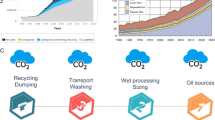Abstract
Jaggery and confectionery are the classical decentralized cane sweets prepared and used by many people all over the world. Both are playing an overriding role in the sugar economy by reaching the demands of export trade. Traditionally, India has been producing jaggery and confectionery for export revenues and is the foremost leading countries in exporting jaggery and confectionery since the ancient period. The current stage of jaggery exports is not consistent with high variance in prices due to changing market scenario, income and taste patterns. The fluctuation in the export market greatly affects the quantum of exports and requisites a time series analysis with modern techniques. Hence, secondary data were collected to assess the dynamic changes of jaggery and confectionery exports from India to various regions of the world by employing the mechanism of the Markov chain model. The model was executed with jaggery and confectionary export data for the year 2004–2018 and predicted the export as well as price level for the next few years. The Markov chain process has found that North African countries import a very high volume of jaggery and confectionary from India. The other countries were recorded with high or medium holding probabilities in export quantity and price for upcoming years. The overall region-wise results for 2019–2025 confirmed that the export quantity of jaggery and confectionery acquires high level, but the price turns into either very high or drops to medium level in the future period which needs to be taken care by the exporters to improve their trade share in the global market.




Similar content being viewed by others
References
Agricultural and processed food products export development authority, (APEDA). http://agriexchange.apeda.gov.in/productprofile/prodintro/JaggeryandConfectionary.aspx.
Basak, P. 2019. Markov chain models for occurrence of monsoon rainfall in different zones of Assom and Meghalaya. Acta Scientific Agriculture 3(4): 163–169.
Da Silva Jale, J., S.F.A.X. Junior, E.F.M. Xavier, T. Stosic, B. Stosic, and T.A.E. Ferreira. 2019. Application of markov chain on daily rainfall data in paraíba-Brazil from 1995–2015. Acta Scientiarum. Technology 41: 1–10.
Dong, J., A.S. Simsek, and H. Topaloglu. 2019. Pricing problems under the markov chain choice model. Production and Operations Management 28(1): 157–175.
Govindaraj, G.N., S. Suryaprakash, N. Sivaramane, and P. Murali. 2016. Changes in edible oil preference and present day consumption status of households: A case of Tamil Nadu state, India. Journal of Oilseeds Research 33(2): 175–178.
https://agriexchange.apeda.gov.in/WeeklyeReport/JaggeryReport.pdf.
Kusuma, D.K., and H. Basavaraja. 2014. Stability analysis of mango export markets of India: Markov chain approach. Karnataka Journal of Agricultural Sciences 27(1): 36–39.
Sarkar, P., D.H. Lohith Kumar, C. Dhumal, S.S. Panigrahi, and R. Choudhary. 2015. Traditional and ayurvedic foods of Indian origin. Journal of Ethnic Foods 2(3): 97–109.
Serma, A.S.P., M. Prabu, and B. Jayavarathan. 2013. Changing dimensions of export of leather and leather products in India—A markov chain analysis. Indian Journal of Applied Research 3(2): 69–70.
Shree, S.J., A.A. Pandian, and K. Natarajan. 2017. Changing direction of trade of dairy products in India—An application of markov chain analysis. International Journal of Livestock Research 7(3): 57–62. https://doi.org/10.5455/ijlr.20170221051154.
Sreenivasamoorthy, D., and K.V. Subramanyam. 1999. Onion exports markets and their stability for increasing India’s exports: Markov chain approach. Agricultural Economics Research Review 12(2): 118–127.
Su, F., J. Wu, and S. He. 2019. Set pair analysis—Markov chain model for groundwater quality assessment and prediction: A case study of Xi’an City, China. Human and Ecological Risk Assessment: An International Journal 25(1–2): 158–175.
Suseela, K., and Y.E. Prasad. 2003. Export performance of turmeric—An application of markov chain model. Andhra Agricultural Journal 50(1-2): 121–126.
Tejaswi, P.B., B.K. Naik, L.B. Kunnal, and H. Basavaraj. 2006. Direction of trade and changing pattern of Indian coffee exports—An application of markov chain analysis. Karnataka Journal of Agricultural Sciences 19(1): 71–75.
Varga, O.G., R.G. Pontius Jr., S.K. Singh, and S. Szabo. 2019. Intensity analysis and the figure of merit’s components for assessment of a cellular automata—Markov simulation model. Ecological Indicators 101: 933–942.
Yeh, H.F., and H.L. Hsu. 2019. Using the markov chain to analyze precipitation and groundwater drought characteristics and linkage with atmospheric circulation. Sustainability 11(6): 1–18.
Acknowledgements
The authors would like to thank and also gratitude toward the Director, ICAR-Sugarcane Breeding Institute, Coimbatore. The first author would like to thank the management of Kalasalingam Academy of Research and Education for providing fellowship to carry out the research work. The authors are also grateful to the anonymous reviewers for their invaluable comments and language revisons which improved the presentation of the manuscript.
Funding
The author(s) received no financial support for the research, authorship, and/or publication of this article.
Author information
Authors and Affiliations
Corresponding author
Ethics declarations
Conflict of interest
The author(s) declared no potential conflicts of interest with respect to the research, authorship, and/or publication of this article.
Additional information
Publisher's Note
Springer Nature remains neutral with regard to jurisdictional claims in published maps and institutional affiliations.
Rights and permissions
About this article
Cite this article
Revathy, R., Murali, P., Venkatasubramanian, V. et al. An Appraisal of Indian Jaggery and Confectionery Exports in the Global Market: Markov Chain Model Approach. Sugar Tech 23, 118–129 (2021). https://doi.org/10.1007/s12355-020-00866-3
Received:
Accepted:
Published:
Issue Date:
DOI: https://doi.org/10.1007/s12355-020-00866-3




